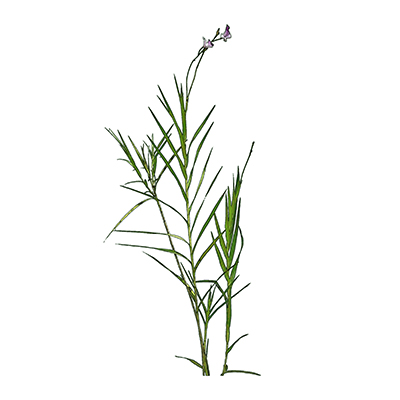Bamboo orchid
Arundina graminifolia (D.Don) Hochr.
Orchidaceae
Location in our garden
Principal



Synonym
Arundina bambusifolia Lindl.
Bletia graminifolia D.Don
Cymbidium bambusifolium Roxb.
Habitus
Orchid. An evergreen tall terrestrial plant, perennial, grows up to 3 m high
Part Used
Leaves
Flowers
Roots
Stem
The Whole Plant
Growing Requirements
Full Sunshine
Need Shade
Habitat
Wetland
Forest
Mountains
Roadside
Rocky Areas
Shrublands
Grassland
Terrestrial
Overview
Bamboo orchid is native to the tropical and subtropical Asia from the Himalayas to Tahiti. This species was described by Bénédict Pierre Georges Hochreutiner in 1910. The genus name Arundina is derived from the Greek word, "Arundo", in reference to the reed-like stems of the plant, while the specific epithet "graminifolius" comes from the Latin "gramineus" and "folius", which refer to the grass-like leaves.
Vernacular Names
Orchidée bambou (French), Zhu ye lan (Chinese), Teet pindalu (Nepalese), Siauralapé arundina (Lithuanian), Orkid buluh (Malay), Ghasphul (Bangladesh).
Agroecology
A. graminifolia occurs naturally in lowland secondary forests, right up to higher altitudes in the tropical montane forests, at elevations of sea level to 1,200 m. Its natural habitats include open areas, grassland, mountains and rock places by streams. Grows best in fertile, consistently moist but well-drained soils in part shade. Tolerates full sun. Thrives in humid conditions (misting helps in areas with low humidity).
Morphology
- Stems - erect, 1.5-2.5 cm tall and up to 1.5 cm in diameter. Stems are clad with narrow leaves with sheaths that wrap the stems.
- Leaves - simple, alternate, sessile, smooth, borne in two ranks, linear-lanceolate and grass-like, 12-30 cm long, 1.5-2.5 cm wide.
- Flowers - bisexual, simple terminal inflorescence may be branched, 15-30 cm long, flowers are purple red, pink to white, up to 10 cm across, veined magenta with a yellow to orange-yellow patch at the base.
- Fruits - an elongated capsule filled with tiny seeds.
Cultivation
- Propagation is by seeds, division and aerial plantlet.
- It grows well mounted on bark, in a pot, or in a hanging basket with a mix substrate which consist of coco peat moss or coconut fibre (coir), vermiculite or perlite, compost and other ingredients.
- The plant should be repot every two to three years, and it's best to do it in the springtime.
Chemical Constituents
Stilbenoids, sterols, triterpenes, fenol, flavanoid (3(S),4(S)-3',4'-dihydroxyl-7,8,-methylenedioxylpterocarpan, medicarpin, 5-hydroxy-2'',2''-dimethylchromene-(3'',4'':6:7)-flavone, butein, sulfuretin, quercetin, quercetin-β-3-Oglycosides, kaempferol, kaempferol-β-3-O-glycosides, (+)-catechin, steppogenin-4'-O-β-Dglucosiade).
Traditional Medicinal Uses
- Considered antibacterial, antitumor, antidotal, and immune regulating.
- Studies have suggested anticancer, antioxidant, antidepressant, antiviral, anti-lipid peroxidation, anti-hemolytic properties.
- Roots and stems are used for jaundice, beriberi edema, abdominal pain, snake bites, carbuncles and sores.
- Rhizome and leaf paste is applied locally for rheumatic pains.
- Leaves, roots, and juice are used for ear pain.
- Flowers is used to treat high blood pressure.
- In India, scrapped bulbous stem is applied on heels to treat cracks.
- In Indonesia, boiled roots is used as tonic for men.




